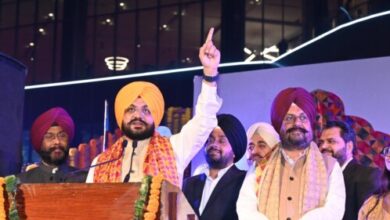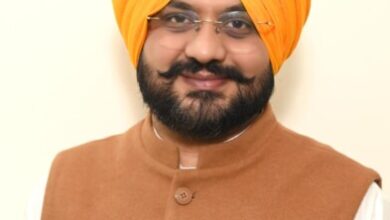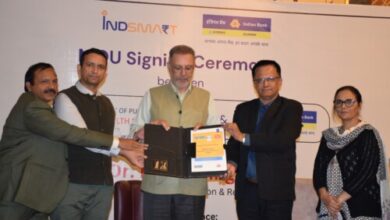Calculating Logarithm On Fingertips : A study by Narinder Kumar Wadhawan IAS (Retd.)

*Calculating Logarithm On Fingertips : A study by Narinder Kumar Wadhawan IAS (Retd.)*
APPROXIMATION OF LOGARITHM, FACTORIAL AND EULER-MASCHERONI CONSTANT USING ODD HARMONIC SERIES
Chandigarh, August 25:-
In a chess game, when Birbal defeated him, the emperor Akbar enthralled by his skill, asked Birbal to state whatever he liked as a reward and his wish would be fulfilled. Hesitatingly, Birbal expressed that he might be given a few grains of rice on chessboard in a such a way that one grain be put in first square, two grains in second square, four grains in third square so on and all the sixty four squares be filled up in this fashion. To the surprise of the emperor, the entire rice stock of the empire fell short, when even half of the squares could not be filled up. Witty Birbal knew the hugeness of exponentiation.
In mathematics, serial number of the square is analogous to logarithm of the grains kept in that square and multiplying factor 2 that makes 2, 4, 8 grains in second, third, fourth squares, is analogous to the base of the logarithm. If serial number of the square is 11, then logarithm of the grains kept in eleventh square, is 10. Similarly, we can state that logarithm of grain, kept in first square is 0. Had Birbal said that 1 grain be put in first square, 10 in second, 100 in third so on, then the base of the logarithm would have been 10. In scientific use, base of logarithm is taken as ‘Euler’s Number’ abbreviated ‘e’ which equals 2.71828. Such logarithm to the base ‘e’ is called natural logarithm and is donated by ln. For example, logarithm of 100 to the base ‘e’ is written as ln 100.
In what may lead to an important research work in Number Theory, a retired bureaucrat from Punjab State, Sh Narinder Kumar Wadhawan who has retired from Indian Administrative Service, associated with his daughter Priyanka who happens to be a graduate in Computer Science Engineering and they have innovated the simplest method of determining natural logarithm of a real number. Briefly stating, for determining natural logarithm of number 2, one will have to find odd numbers in 4 i.e double of 2. These are obviously 1 and 3. Ignoring odd number 1 in all cases, natural logarithm of 2 will be 2/3. In this way, natural logarithm of 5, will be 2/3 + 2/5 +2/7 +2/9. To determine logarithm of a number ‘n,’ odd numbers (ignoring 1), i.e, 3, 5,…, 2n-1 are first written and, then double the sum of reciprocal of these odd numbers except one, called odd harmonic series, yields value of logarithm of n written as ln (n). Mathematically, ln (n) = 2/3 + 2/5 + 2/7 + …+ 2/(2n-1).
These determinations are approximate and to achieve precise value of natural logarithm, the paper “APPROXIMATION OF LOGARITHM, FACTORIAL AND EULER-MASCHERONI CONSTANT USING ODD HARMONIC SERIES,” prescribes multiplication and division of the real number by a large number. For example number, ‘n’ should be written as 100n/100 and the formula modifies to ln (n) = 2/101 + 2/103 + 2/105 + …+ 2/(200n-1). More the value of multiplier and divider (it is 100 in the example), the better would be the result.
To achieve the desired results, the father daughter duo stated, they had considered the numbers as product of blocks. For example, five was considered, 5 = 1 x 2/1 x 3/2 x 4/3 x 5/4. These blocks 2/1, 3/2, 4/3, so on, were given the nomenclature of Number Building Blocks on account of their characteristics nature of building numbers. However, conventionally in our primary education, concept of an integer is given as summation of unities like 5 =1 + 1 + 1 + 1 + 1. Formula for the number building blocks were derived in exponential form and that led to determination of not only natural logarithm but also Factorial of a number and Euler-Mascheroni constant.
Their research paper is published by the Department of Mathematics, Dibrugarh University in its official journal Mathematical Forum in issue 28(2), year 2021. Abstracted in Mathematical Reviews (USA), Mathematical Forum is a recognised journal of University Grant Commission and adopts policy of double blind peer review.




